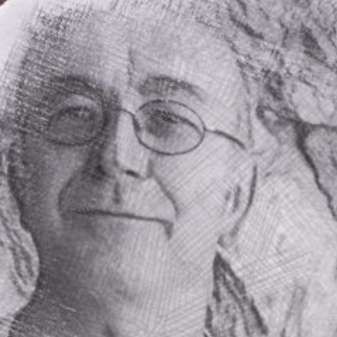The Scottish Ensemble’s tagline, “re-defining the string orchestra” could, in this particular programme, have justified the additional claim “re-defining the quartet”. The only work in this imaginatively conceived, four-item programme not written for quartet (or double quartet) was the opening Musical Postcard no. 4 by the young British composer Martin Suckling. Subtitled “Touch”, this piece might be regarded as triply bespoke; written for its commissioners, the Scottish Ensemble; dovetailing with the other items in this programme; contributing to a cohesive whole with its three antecedents, alongside which it is later to be programmed. It certainly worked as an opener here. The mix of pizzicato and strident down bows (maximised by the ensemble’s fondness for playing on their feet) guaranteed an infectious energy which seemed to travel round the group, adding a spatial dimension to the music’s chase-like nature.
The remainder of the first half was devoted to Shostakovich’s substantial 1944 String Quartet no. 2 in an arrangement by the ensemble’s artistic director, Jonathan Morton. The symphonic scale is all the more remarkable in light of its nineteen-day genesis. The confident energy suggested by this timescale is certainly evident in the joyous, Lydian-mode opening, delivered here with great vigour.
Contrastingly, the outer sections of the following “Recitative and Romance” cry out as though in supplication. Sustained, still chords supported Morton’s heartfelt solo lines. At one point, his bow over the fingerboard, he seemed to be achieving a haunting, Hendrix-like feedback. There are three instances of related parallel chords in this movement. Following the opening stillness, this unanimity of movement feels huge. Despite matching rhythm and melodic contour, the character of each chord sequence is vastly different and the colours summoned by the ensemble really highlighted this.
Again, in contrast to the opening, there is literally muted menace throughout the “Waltz”. Since Ravel’s 1919 La Valse, simple joy seems beyond the reach of this dance. Nevertheless, its rhythmic life brought out such animation in the standing players that their varying heights, movements, and bow movements resulted in a festival of angles.
The closing “Theme with Variations” was delivered with necessary urgency. The theme, presented here with great conviction on Catherine Marwood’s viola, undergoes 13 variations, highlighting and masking by turns its simple folk origins. Like the chords in the second movement, these variations made me aware of the transformational effect of surroundings on apparently constant musical character. After this emotional workout, for ensemble and audience alike, there was what felt to me like heartfelt applause.
A younger Shostakovich greeted us after the interval. His planned five-movement suite for double quartet became, in the end, the 1924–5 Two Pieces Op. 11. Whatever contrasts the three never-to-be movements might have provided, they would have met their match in the respective grandeur and savagery of the surviving “Prelude” and “Scherzo”, the latter of which was exhilaratingly played here. Fuelled by urgently pulsing cello, the upper strings alternate between sarcastic melody and stabbing chords. I couldn't help feeling that the young Shostakovich would have been thrilled by this performance and delighted that the intervening 88 years had not diminished its impact.
Those not required in the double quartet returned, restoring the Scottish Ensemble’s 4/4/3/2/1 lineup for the closing item: David Matthews’ arrangement of Britten’s 1945 String Quartet no. 2 Op. 36. Those wondering where arranging fits into the picture would no doubt, in the first instance, fix their eyes and ears on Diane Clark’s significant double bass contribution. Later, they might spot the necessity of soloists replacing sections in the various ad lib cadenzas. Certainly, spontaneity could be preserved by this measure and a degree of textural variety could also be woven into the arrangement. In this regard, I felt that both this and Morton’s earlier arrangement really worked.
The haunting “Allegro calmo senza rigore” was beautifully played, its many breathtaking chords nicely balanced. The widely spaced intervals of the more energised sections put me in mind of the kind of riffs which frequently populate Steve Reich’s large minimal canvases. The driving “Vivace” was delivered with a “possession” equal to the Shostakovich scherzo. The angular octave passages in the first violins sounded particularly edgy. The closing “Chacony” – a fitting tribute to Britten’s hero Purcell – echoed the Shostakovich Variations which had closed the first half, in the dynamic balance of constancy and transformation. There was some very impressive cello work from Alison Lawrance and a blistering cadenza from Morton.
I was delighted with this well-executed programme, both for the playing and for its alerting me to previously hidden similarities between two favourite composers; through their soundworlds of troubled beauty runs a seam of defiant strength which prompts constant revisiting.


